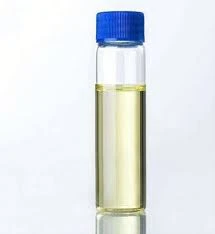cationic polyacrylamide flocculant
The Role of Cationic Polyacrylamide Flocculant in Water Treatment
Cationic polyacrylamide flocculant (CPAM) has emerged as a vital player in the field of water treatment and industrial processes. This synthetic polymer, characterized by its positive charge, has gained popularity due to its ability to effectively aggregate and settle suspended particles in various aqueous environments. With increasing concerns over water pollution and the need for efficient waste treatment methods, CPAM's role is becoming increasingly significant.
Understanding Cationic Polyacrylamide
Cationic polyacrylamide is derived from acrylamide, a compound that, when polymerized, forms a long-chain polymer with cationic groups attached. These cationic charges provide the polymer with unique properties that enable it to interact with negatively charged particles in water. As a flocculant, CPAM can bind with suspended solids and facilitate their aggregation into larger flocs, which can then be easily removed from the water through sedimentation or filtration.
Mechanism of Flocculation
The flocculation process is crucial for clarifying water in both municipal and industrial settings. When CPAM is introduced into a suspension, its cationic nature allows it to neutralize the negative charges of colloidal particles. This charge neutralization reduces the electrostatic repulsion between particles, encouraging them to come together and form larger aggregates. These aggregates, or flocs, can settle at the bottom of the treatment basin more efficiently than individual particles. As a result, the overall clarity of the water improves significantly.
Applications of Cationic Polyacrylamide
Cationic polyacrylamide flocculants are employed in various applications, including
1. Municipal Water Treatment In the treatment of drinking water, CPAM aids in the removal of organic and inorganic particles, enhancing the overall quality of the water supply. It is particularly effective in treating water with high turbidity.
2. Wastewater Treatment Industrial wastewater often contains high concentrations of suspended solids, oils, and other contaminants. CPAM is used to improve the efficiency of sludge dewatering processes, reducing the volume of waste that needs to be disposed of and minimizing the environmental impact.
cationic polyacrylamide flocculant

3. Pulp and Paper Industry CPAM is utilized in paper manufacturing to enhance the retention of fibers and fillers, improving overall product quality while decreasing raw material consumption.
4. Mining and Mineral Processing In the mining sector, CPAM is employed to separate valuable minerals from waste material, enhancing the recovery of resources while reducing environmental impact.
Benefits of Using Cationic Polyacrylamide
The use of cationic polyacrylamide flocculants offers several advantages
- High Efficiency CPAM demonstrates a high degree of effectiveness in aggregating a wide range of particles, making it suitable for diverse applications in water treatment.
- Easy Handling CPAM is typically supplied in powder form, making it convenient for storage and application. It dissolves easily in water, allowing for rapid deployment in treatment processes.
- Cost-Effective The application of CPAM can lead to significant cost savings in terms of energy and resources, especially in wastewater treatment where it improves sludge dewatering and reduces disposal costs.
- Environmental Compatibility CPAM is generally considered safe for the environment when used according to recommended guidelines. Its biodegradability further enhances its appeal as a sustainable solution in water treatment.
Conclusion
As global water resources face increasing pressures from pollution and industrialization, the demand for effective water treatment solutions continues to rise. Cationic polyacrylamide flocculants present a versatile and efficient method for addressing water clarification challenges across various sectors. With continuous advancements in polymer chemistry and application techniques, CPAM is likely to remain a key component in the quest for cleaner, safer water. Through its various applications and benefits, cationic polyacrylamide flocculant represents a crucial advancement in the field of water treatment, promising a more sustainable future for water management practices.
-
LK-319 Special Scale And Corrosion Inhibitor For Steel Plants: Advanced Solutions for Industrial Water SystemsNewsAug.22,2025
-
Flocculant Water Treatment: Essential Chemical Solutions for Purification ProcessesNewsAug.22,2025
-
Isothiazolinones: Versatile Microbial Control Agents for Industrial and Consumer ApplicationsNewsAug.22,2025
-
Scale Inhibitor: Key Solutions for Water System Scale PreventionNewsAug.22,2025
-
Organophosphonates: Versatile Scale Inhibitors for Industrial Water SystemsNewsAug.22,2025
-
Scale and Corrosion Inhibitor: Essential Chemical Solutions for Water System MaintenanceNewsAug.22,2025





